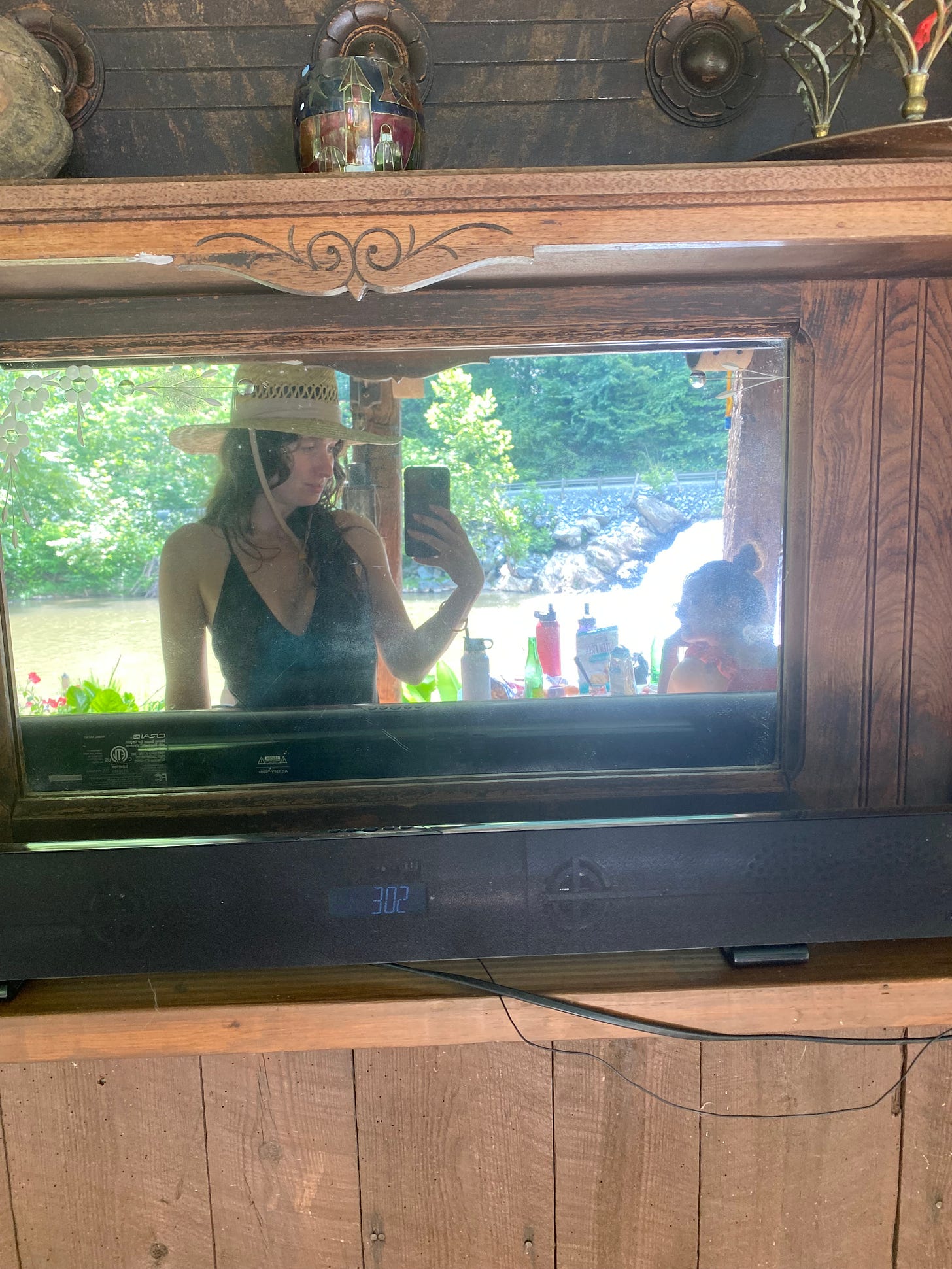I am writing you at 11:26 p.m. because my mama didn’t raise a quitter, and I committed to sending this thing out on Sunday evenings. So, despite a thoroughly and delightfully derailed trip home from a weekend away, here I am, telling you something good. We were delayed in our return because of a stop in Richmond for antiquing, the spoils of which will be the subject of a future newsletter.
Three friends and I went to Appomattox, VA these past four days to celebrate two of our birthdays. My pal Nicole booked the most perfect airbnb as a surprise for me and her partner, Eliot, who is also a dear friend, and whose birthday is the day after mine. The house she chose is an old mill turned house that sits on a dammed pond on Wreck Island Creek.
The rushing water over the dam creates a multi-sensory experience: The cool mist rises, the lush plants and tall trees create a private refuge, and the sound of the water is so loud you find yourself going to the windows to see if it’s raining.
The owners, Jim and Liz Baker, are obviously and rightfully proud of the property: They had two laminated news articles on the walls detailing the history and architecture of the mill.
According to an article in the Virginia News and Advance, the land has housed three mills, the latest dating to about 1860. The current building is believed to have been built around the turn of the century in a style called “Virgina two over two,” which refers to the first floor and second floor having the same two-room dimensions, all connected by a central hall.
In the Colonial era, the mill operator was Sheriff Jeremiah Whitney. The property switched family hands, eventually ending up in those of “legendary gunsmith” Hacker Martin and his wife, Maude, and their children in the 1950s and 60s.
The Martins were followed by a George Mason philosophy professor who was “involved in a number of anti-Vietnam War activities.” He established a commune on the property, which, local legend has it, enjoyed the brisk creek-fed pond au naturale. After the commune disbanded, a woman named Penny stayed and raised her daughters in the house, which became more and more derelict.
By the time Jim and Liz bought the property in 2008, the mill house was a shell of its former self. But, they saw potential and used as much original and time-period-appropriate material as possible to restore the structure. The influence of their time as missionaries in Eastern Europe is apparent in the décor of the house, which is an eclectic blend of international art and rustic, southern detailing. A wood burning stove still heats the home.
The walls and yard are festooned with old farm tools and inner workings of the old mill, and millstones act as cooling places to sit in the garden. The stone is an original buhr stone, which was brought over from France specifically for mills up to the 19th century.
My favorite detail is an added-on outdoor mirrored mantel piece. I also spent a lot of time in the hammock.
You can see more pictures of the property here.
Until next week,
Elizabeth
This newsletter is just one facet of Zhuzh, my platform dedicated to conscious consumption and making space for delight. I offer secondhand-and-vintage-based wardrobe and interior styling services, art curation, and super chill life coaching. Keep up with me on Instagram and learn more at www.zhuzhlife.com.







